400 years of data
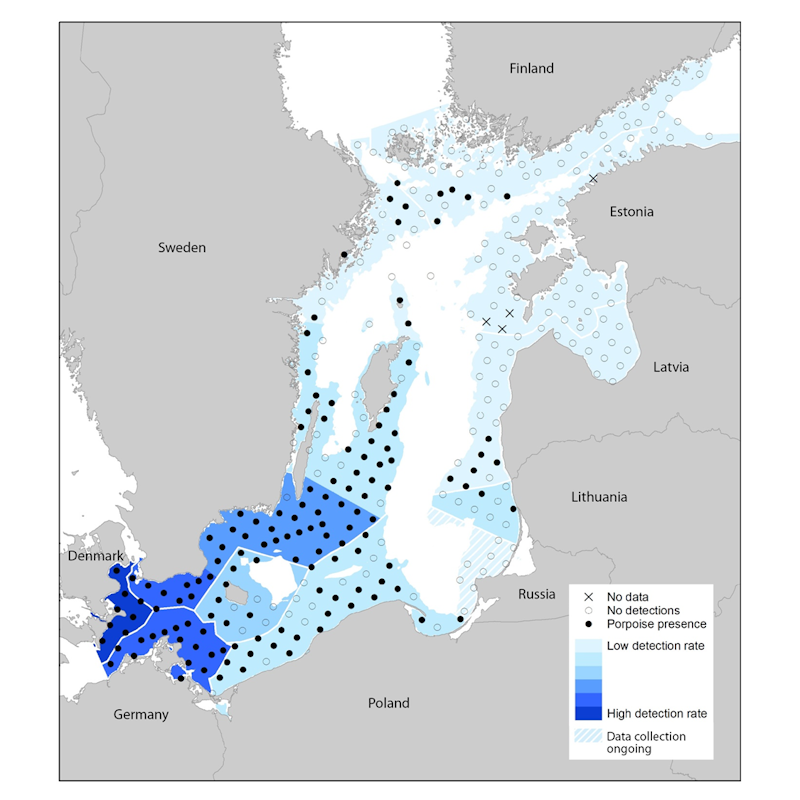
SAMBAH was carried out over 2 years, with C-PODs deployed at 300 stations mostly during the ice-free months.
The C-PODs processed 12,000TB data at sea. That is a hugely problematic data volume requiring many servicing voyages etc. except that the C-PODs selected 0.5TB total in 400yrs of logging. That allowed 4+month deployments and gave manageable data volumes without losing detections.
Stratified sampling
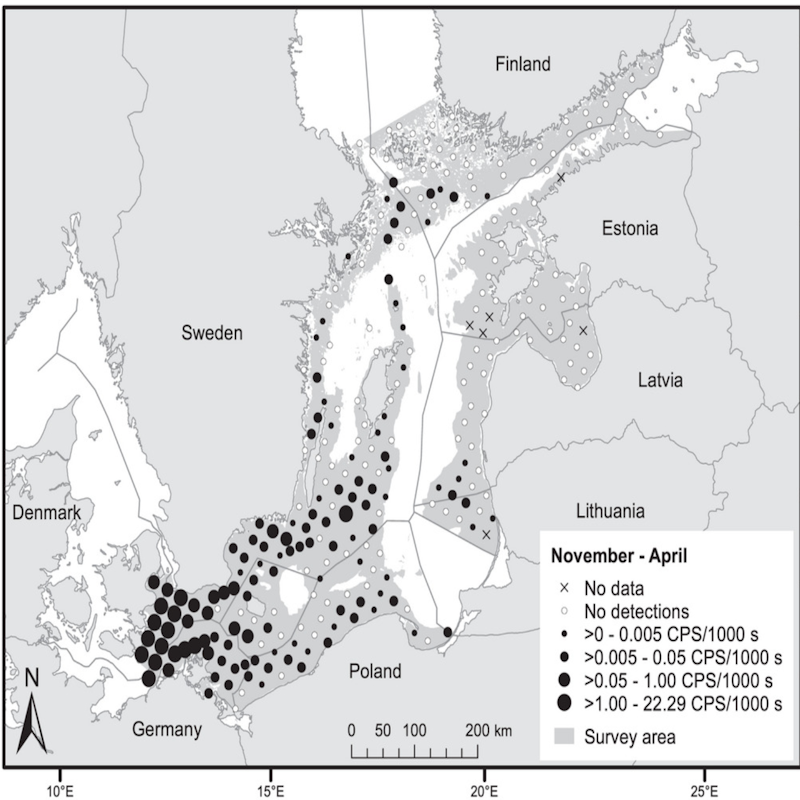
To avoid sampling bias a regular grid of stations was created and its postioning was randomised within the distance of the station spacing.
Sites with water depths between shallow and 80m were accepted. Some had to be moved to avoid the (ill-fated) Nordstream pipeline and a few other sensitive features.
Seasonal patterns
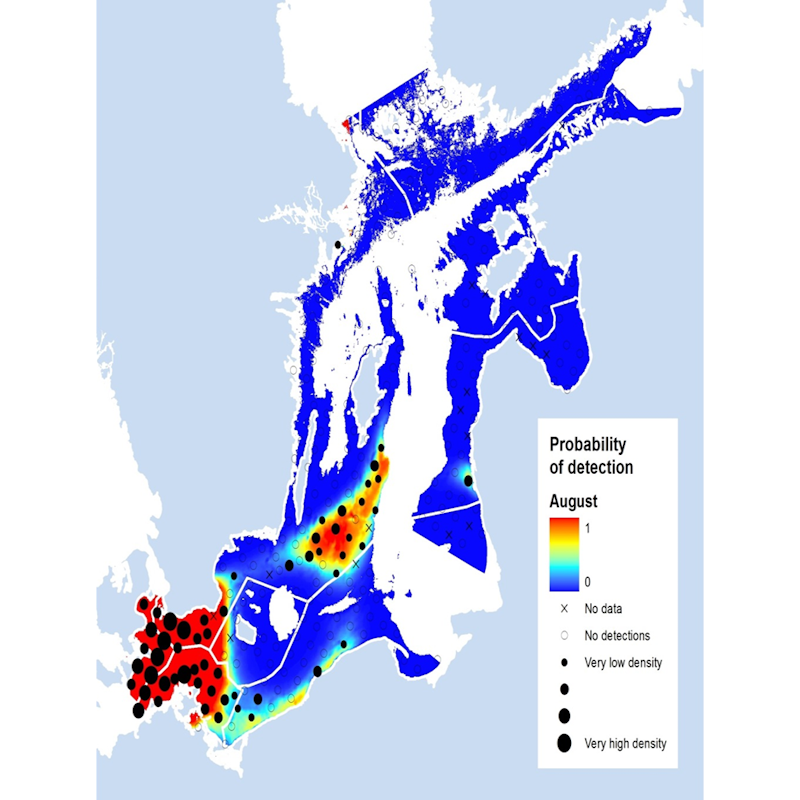
Prior visual line transect studies had detected almost no porpoises so it was a surprise that SAMBAH got enough detections to show seasonal movement patterns that matched those known from the early part of the 20th century.
This included detections of porpoises in the waters of Finland.
Pioneering design
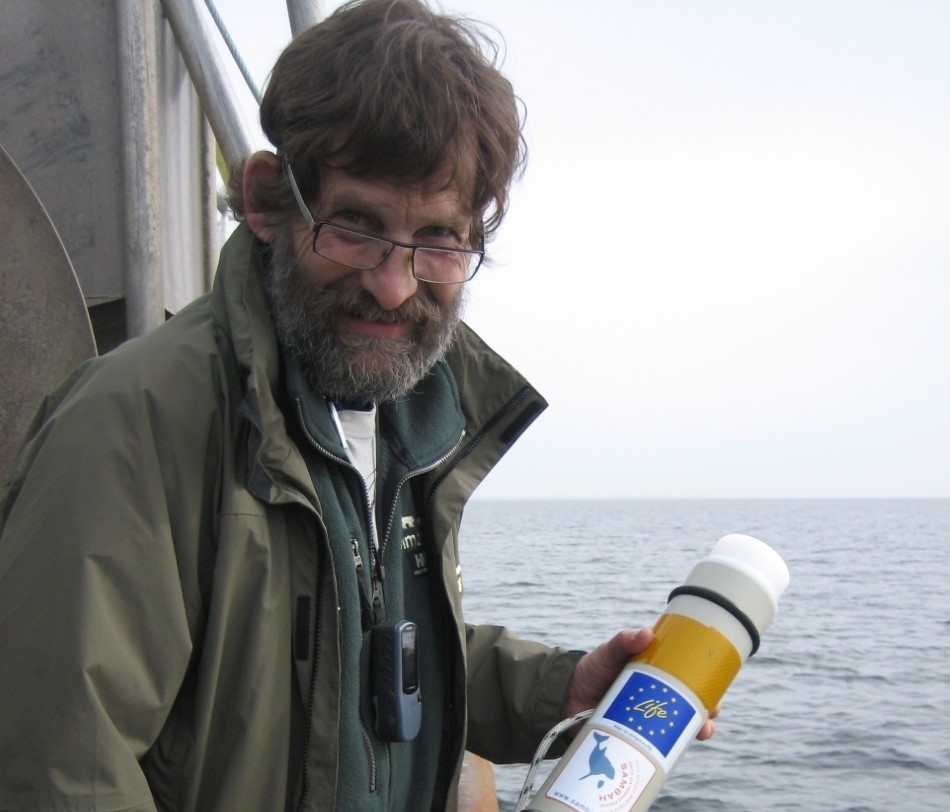
This project was proposed by Prof Mats Amundin from Sweden, invovled 9 nations around the Baltic Sea and was funded by the European Union's Life Fund.
The results answered questions on whether and where the Baltic Harbour Poprpoise existed and lead to the creation of a large marine conservation zone south of the island of Gotland.
Estimation techniques
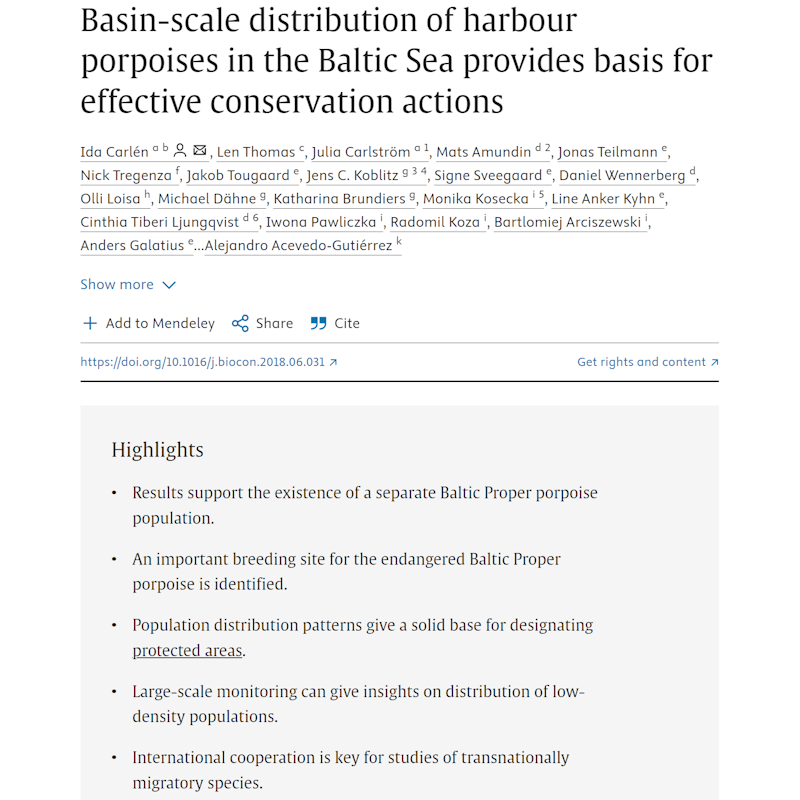
The POD detections could be used directly to assess distribution and seasonal changes.
To assess the absolute size of the population a detection function was needed and this difficult task was assessed, with some difficulty, in several ways by the Centre for Research into Ecological and Environmental Modelling in
St. Andrews, Scotland
Deployment methods
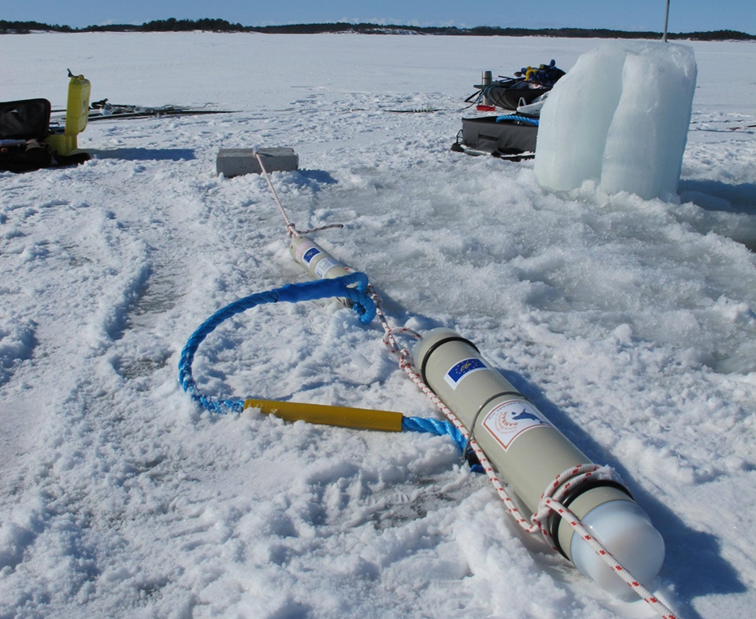
A mixture of deployment methods was used including a number of different acoustic releases, pole buoys and moorings with a grappling line on the sea bed.
The C-POD does not have the capacity to control the integrated acoustic release that is now in development of the F-POD.
Classifier design
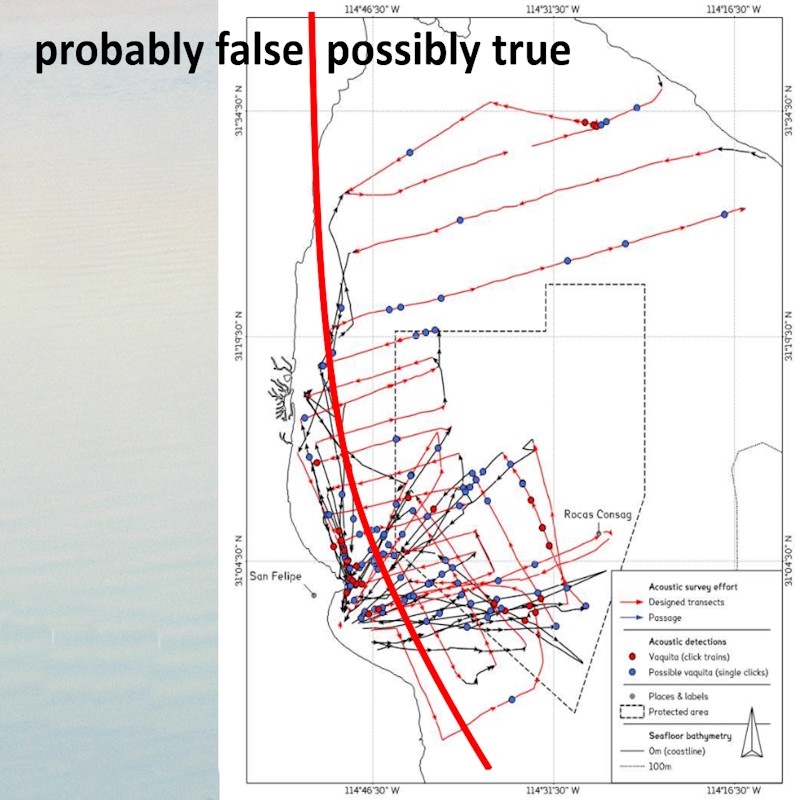
A very small population spread over a large area is a problem, because the sources of false postives will still exist at their usual density so they will swamp the tiny true postive signal in the data, as seen in this example of vaquita detection in .wav file data.
To address this a 3-day international workshop at the Hel Marine Station in Poland identified the issues for the Baltic-specific Hel1 classifier for C-POD data. With Hel1 about 2/3 of sites had no false positives in the 2 years of the project.
Population estimate
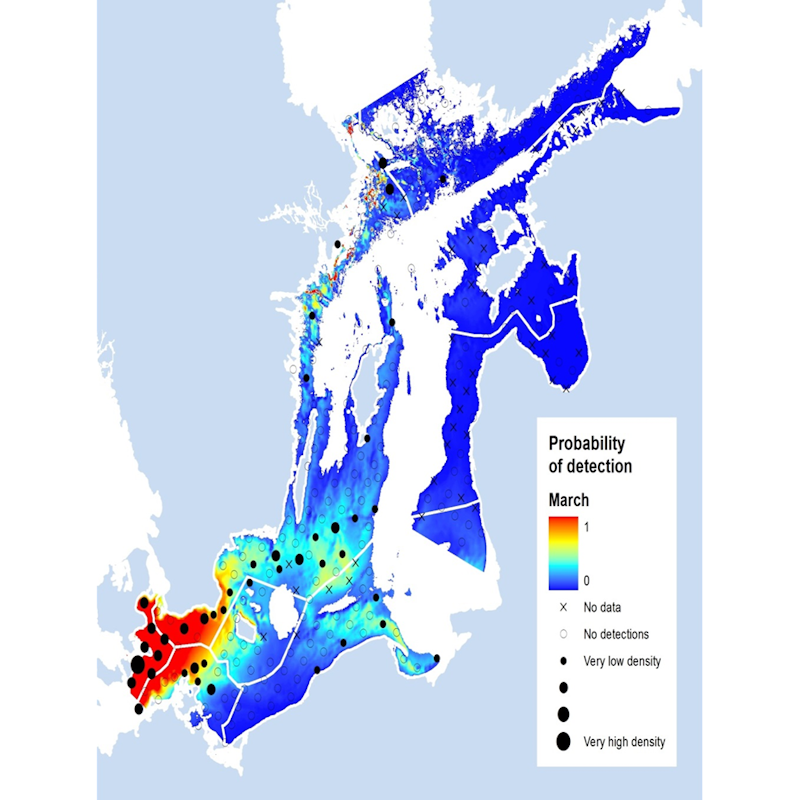
The SAMBAH project produced an estmated population of only about 497 animals with wide confidence limits (95% CI 80-1092).
Now a deployment of F-PODs, at a much reduced sample of sites, is being made to enable the trend in the numbers to be determined.
Passive acoustics is the only possible method for determining this trend.
Causes of the decline
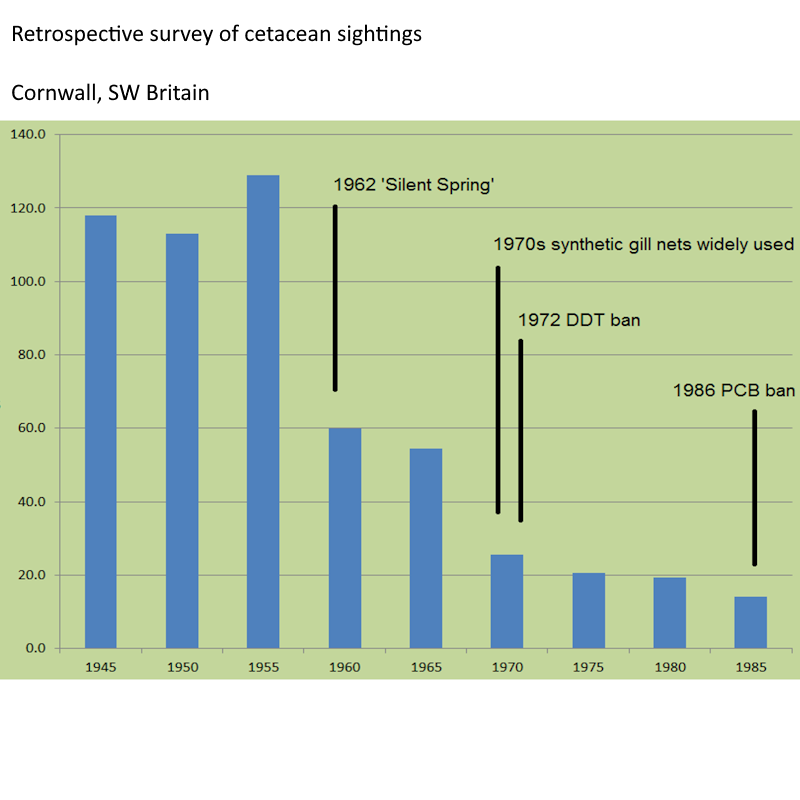
Before the mid-1900s the Baltic Harbour Porpoise had been the subject of a direct hunt. It had suffered population falls after very sever winters but the population had been maintined long term.
The massive decline was most likely due to pollution with persistent organo-chlorines, intially from the DDT group of pesticides and later from PCBs - industrial chemicals used in transformers, building mastics and other applications from which it entered rivers and then the sea from all lands surrounding the Baltic.
Landmark sequences
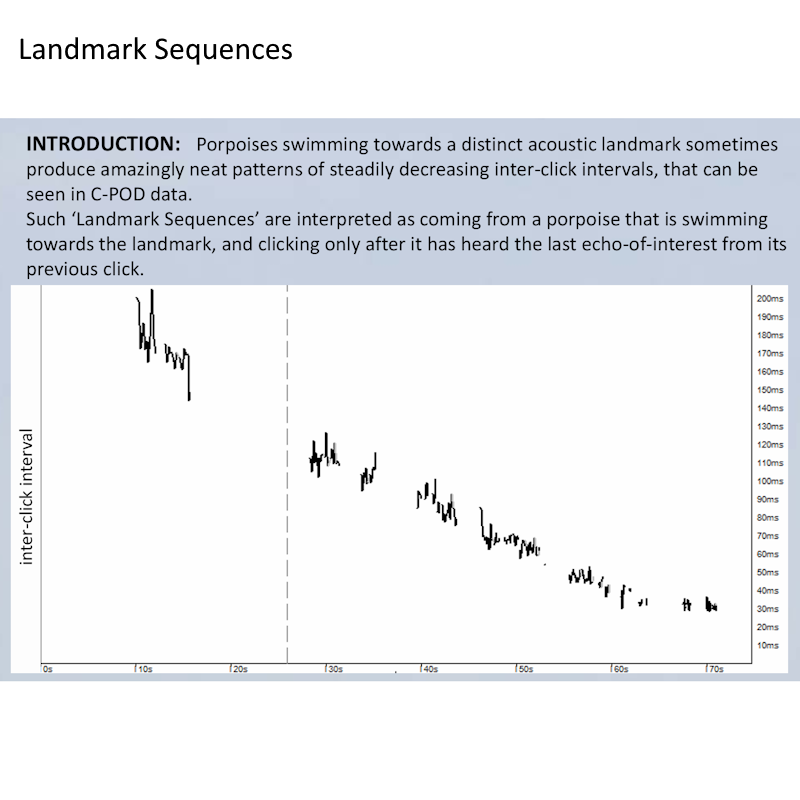
The SAMBAH project data set contained more than 1000 'landmark sequences' in which the steadily falling inter-click-interval in a series of click trains can be analysed to show the speed at which a porpoise was appraching the POD and associated mooring gear.
Landmark sequences are rarely seen from dolphins, but are of special interest as the distance from POD to porpoise is known during these seuqences.